- Why is my Cruise Control not Working? [14 reasons]

14 Reasons Why your Cruise Control may NOT Be Working
The reason for your cruise control not working could be as simple as a blown fuse to really complex electrical problems. Defective switches, sensors, and even “check engine” light, all could contribute to this problem.
If you like to travel and own a car fitted with cruise control, you know how comfortable it can be to maintain a constant speed! When a cruise control system gets damaged, it is just as annoying as it is dangerous.
Cruise control is connected to several components of the car, and when it fails it can mean that something could be wrong with the CC itself. It could also be a signal that something wrong is happening with any other component of the car.
Why is my cruise control not working?
In this article, I am going to show you the main reasons why your cruise control may not be working (from the simplest to the more complex ones):
Reason #1. Bad or blown fuse
The cruise control’s circuit (like many other electronic components of your car), is protected by a fuse that will blow to protect the system from short circuits and overloads. If your vehicle’s cruise control fuse is blown, the system will stop working.
You can replace the fuse with a new one of the correct amperage, according to your vehicle’s owner manual. If the new fuse doesn’t blow again, everything will be ok; if the fuse blows again, you have to keep searching for what is making that fuse blow.
Reason #2. Burnt brake lamp
Some cruise control systems are disabled when the brake lamp is blown. Check your brake lights. If you find a burnt brake light, just replace it and test the system again.
Reason #3. Defective brake light switch
A defective pedal switch can also make your cruise control stop working. Remember that all cruise control systems are automatically disengaged as soon as the brake pedal is pressed down.
If the cruise control didn’t stop working when a fault in the brake light or brake pedal switch is detected, it could be dangerous; that’s why the CC control unit constantly monitors the status of this switch.
Reason #4. Clutch pedal switch deactivation (for manual transmission vehicles)
Cruise control is deactivated when the clutch is pressed by the driver in manual transmission cars. The CC control unit monitors this switch as it does the brake light switch.
Reason #5. The vehicle speed sensor is not working
A vehicle’s cruise control needs to be able to determine the vehicle’s actual speed. This enables the system to determine how much throttle needs to be applied in order to keep a certain speed, among other things.
The speedometer speed sensor is not always the sensor used by cruise control. Some systems rely on the ABS speed sensors, others do an average and some have a dedicated speed sensor.
If the system can’t detect the vehicle’s speed or detects a problem with the speed sensor, it will stop working.
Reason #6. Faulty throttle body or accelerator pedal
In modern engines, the throttle body is driven electronically by the engine control unit (ECU), and the accelerator pedal works like a potentiometer. The processor managing the cruise control system will act as the accelerator pedal, sending more or less voltage to the throttle body to open or close the throttle body’s butterfly valve.
If there is a problem with your vehicle’s throttle body, your cruise control won’t work.
Reason #7. Check Engine light is “ON”
If your vehicle instrument panel has the “Check Engine Light” ON and the fault stored in the ECU’s memory is related to some component vital for the cruise control system, you will not be able to use your cruise control until you have fixed that problem.
Reason #8. Faulty steering wheel’s spiral cable/clock spring
The spiral cable connects all the switches from the steering wheel (in case your steering wheel has switches) to their respective modules. This includes the connection of the driver’s airbag.
These wires (also called clock springs) are prone to get cut. A faulty spiral cable may have an open circuit making it unable to reach the vehicle’s cruise control module (CCM).
Reason #9. Bad Cruise Control Switch
Your vehicle’s cruise control switches have internal contacts that wear out. If that happens, the switches won’t be able to contact the CCM.
Depending on which buttons are faulty, your whole cruise control can stop working or just some functions won’t work.
Reason #10. Electrical problems with different modules and wiring
Modern cruise control systems use electrical and electronic components, and they are connected to other modules and systems of the vehicle. Some of these systems are the ECU, ABS, and/or Stability Control Systems like ESP.
The CCM makes a check of these systems once the key is switched to ON, and if some of these components are not working in optimal conditions, the CCM won’t engage. If none of the above items seem to be the problem, the vehicle needs to be taken to a professional who can perform a full scan of all the components, check that all the voltages, wiring harnesses, and connectors are ok.
The professional is going to detect if there are any connection problems between modules and will be able to find the reason why the cruise control is not working.
Reason #11. Dirty or faulty camera or sensor (only for vehicles fitted with adaptive cruise controls)
Newer vehicles have adaptive cruise control systems. These devices not only keep a fixed speed by the driver; they also can detect other vehicles ahead and behind and are able to keep a safe fixed distance to avoid collisions.
Some of these new systems have laser sensors while others have cameras to calculate the right distance to follow considering the vehicle’s speed and acceleration. Any problem with the sensors will prevent adaptive cruise control from working.
Problems with older cruise control systems
Before electronic injection and electronic throttle bodies, some cars had the cruise control function. In fact, the first cruise controls were introduced in the early 1950s.
These electromechanical cruise controls are pretty simple. They have a vacuum actuator connected to the throttle linkage that opens and closes the throttle to maintain the vehicle’s speed.
In early injection cars, the throttle linkage was replaced by a cable. Some common faults of these old cruise control systems are:
- A faulty vacuum actuator. Vacuum actuators have a diaphragm inside that can break. Any vacuum leak will lead to failure.
- Faulty vacuum control solenoid. It can prevent the actuator from operating normally.
- Broken throttle cable. If the throttle cable or linkage is broken, it needs to be replaced.
I hope you enjoyed my guide to cruise control problems. Even though it doesn’t explain how to fix your cruise control, it gives you an idea of where to start looking if you are going to do it yourself.
Now you will have an idea about how the system works and what are the possible reasons why it’s failing (in case you have to take your vehicle to a shop to be repaired).
Attention! This article is for informational purposes ONLY and is NOT a replacement for professional advice! ALWAYS consult your local specialist for an appropriate solution to your problem. All statements, prices, contact information, recommendations, and reviews contained herein came from sources that we believe to be reliable, but the accuracy or completeness thereof is not guaranteed. Please contact the service provider for complete details and updates.
I always Know and admit that even though I went to school for ABR grad. In 1994 3.36gpa still have go go back to school for upgrades due to vehicle advancement but I still learned alot although I am dealing with an 05 f150 stx which has more recalls then a auto parts store where the employees don’t know a inerta. Switch from an ignition switch ,thanks for the information
Leave a Reply Cancel reply
Your email address will not be published. Required fields are marked *
Save my name, email, and website in this browser for the next time I comment.
Privacy Overview
Automated page speed optimizations for fast site performance
Cruise Control Not Working? 9 Potential Causes
gabrieletamborrelli / Getty Images
- Cars & Motorcycles
- Frugal Living
- Fine Arts & Crafts
- Card Games & Gambling
- Playing Music
Cruise control reduces stress and fatigue on long drives, but if the system isn't working properly, it can become dangerous. If your vehicle's cruise control isn't working, one of the following nine issues may be the root cause.
How Cruise Control Works
Cruise control is a system to maintain vehicle speed without direct driver input. When you want to engage cruise control, you first turn the system “On” with a button or switch. However, this alone does not start the cruise control. When you “Set” cruising speed, the cruise control module (CCM) records the current speed, then takes control of the throttle body to maintain vehicle speed. When vehicle speed increases or decreases (due to wind or hills, for example), the CCM decreases or increases throttle body opening accordingly.
By modulating engine speed, the CCM can maintain your desired cruising speed on the highway. You can increase or decrease cruise speed by tapping a button or lever, and you can cancel cruise control by hitting the “Cancel” or “Off” buttons or stepping on the brake.
Throttle body control has changed over the years. Early systems used a vacuum motor and cable, but these eventually changed over to electric motors. Most recently, with the development of drive-by-wire or electronic throttle control systems (ETCS), cruise control is built into the engine control module (ECM), which controls the throttle body electronically.
Basic cruise control systems still require the driver to pay attention to changing road and traffic conditions. Adaptive cruise control systems, sometimes called "smart" cruise, use radar or laser detection to maintain safe distances from vehicles ahead. Some adaptive cruise control systems merely reduce engine speed to maintain distance, but some of the newest adaptive cruise control systems can also engage the brakes to slow or stop the vehicle. Still, even with adaptive cruise control, it's important that drivers never take their eyes off the road.
Why Is My Cruise Control Not Working?
There are a few basic ways that cruise control can fail, depending on how the system is designed. You may not be able to do much about ETCS cruise control systems, but there are a few things you can check:
Brake Light Switch – As cruise control is automatically cancelled by depressing the brake, some vehicles may disengage cruise control if it cannot detect the brake light switch.
Brake Lights – In some systems, cruise control is disabled when a brake light is blown. Aftermarket lighting, such as LED brake light conversion, might trick the CCM into thinking a brake light is blown, as LED bulbs draw less current than incandescent bulbs.
Fuses and Relays – On some vehicles, fuses and relays are used to protect the cruise control actuator circuit . If the fuse is blown or the relay is faulty, the system won’t work.
Spiral Cable – Many vehicles mount the cruise control switch on the steering wheel. A faulty spiral cable may have an open circuit, preventing the switch from contacting the CCM.
Control Switch – If the internal contacts wear out, the cruise control switch may not be able to contact the CCM. This might disable cruise control completely, or it might not react to the cancel or accelerate functions.
Check Engine Light – On some modern vehicles, particularly those equipped with ETCS, cruise control may be disabled if there is an engine or transmission problem .
Vacuum Leak – Some older vehicles used vacuum actuators to control the throttle body during cruise control operation. If there is a leak, such as a cracked hose or tube, the system won’t work. A vacuum leak might cause the engine to idler higher or set a fuel trim code.
Vehicle Speed Sensor – There are usually multiple vehicle speed sensors (VSS) on any given vehicle. The CCM might use a VSS feed from the ECM, instrument cluster, or transmission. If that signal is lost, the CCM can’t detect vehicle speed, disabling cruise control.
Electrical Problems – As most cruise control systems use electrical or electronic components, any diagnosis should include a thorough check of source voltage, wiring harnesses, and connectors. Anything loose or broken could disable the system entirely.
If your cruise control isn’t working properly, avoid using it until it is repaired. A faulty cruise control system may not cancel on demand, which will create a safety hazard for you and those around you. After assessing your cruise control yourself, take your vehicle to a trusted mechanic for a check or a couple diagnosis and repair.
- How Electronic Throttle Control (ETC) Works
- How the Air Intake System Works
- ABS Brakes and the Facts
- Engine Vacuum Leak: Symptoms and Solutions
- How to Find a Short Circuit
- Troubleshooting Common Condenser Fan Problems
- How to Diagnose a Ford Expedition Transmission Problem
- Why Is My Car Shaking at Idle?
- Diagnosing GM Converter Lock-Up Problems
- 3 Ways to Reset a Check Engine Light
- Car Charging System Check
- What Is a Throttle Body and How Does It Work?
- Why You Can't Read Your OBD-II Codes
- What to Do When Your Car Won't Start or Turn Over
- Why Does the Emergency Brake Light Stay on in My Chevy C1500 Pickup?
- What to Do When Your Tire Pressure Light Is Flashing
Fixing Faulty Cruise Control
Alarmingly, the speedometer needle steadily winds down from 75 mph toward 50. Just as you uncurl your feet and try to accelerate back to traffic speeds, the vehicle downshifts with a lurch and abruptly climbs back to over 80 mph. So you tap the brakes and disengage the cruise control to avoid a conversation with one of the many law enforcement officers lurking behind every other billboard. Toggling the Resume switch settles things down, holding to a legal speed on both the uphill and downhill sections of the interstate. The kids in the back seat have stopped threatening to throw up, too. Then you look in your mirror 20 miles later and see the lights. Red and blue flashing lights. You're doing over 85 mph and, odds are, Smokey isn't going to believe you have the cruise set to 70. Time to find out why your cruise control has a mind of its own.
IT'S NOT A BUG, IT'S A FEATURE Does your cruise control fall out of engagement partway up steep hills? Actually, it will normally drop out if the engine has to work too hard, mainly because after a while there isn't enough vacuum left to pull in the servo after sustained near-wide-open-throttle. You'll just have to put your foot into it. Downshifting helps.
Does your Japanese car not remember the set speed after tollbooths? Unlike most American and European cars, some Toyotas and Hondas are designed not to remember their set speed if the vehicle speed falls below 25 mph, and you're supposed to accelerate the vehicle to your set speed and hit the Set button again. Annoying, but that's the way they were designed.
Do you have to ride the brakes on longer downhills to keep from building up excess speed? That's normal too. The cruise control only has authority to reduce engine speed to idle. It doesn't activate the brakes. Modern cars, in an attempt to improve mileage, have very tall gear ratios, low-friction engine designs, low-rolling-resistance tires and optimized aerodynamics. That long downgrade outside of town may have accelerated your '60s-era Pontiac to only a couple of miles per hour above legal. But, it may well propel your new economy car to blatantly illegal velocities unless you intervene by braking or downshifting.

WHAT'S THAT HISS?: Most common cause of erratic cruise control? Vacuum leaks caused by deteriorated hoses.
SMOOTH AND STEADY Cruise control on your vehicle is a terrific device. It substantially reduces the driver's workload on longer trips, and can save substantial amounts of fuel and expense over the life of the vehicle--until it stops working.
We'll get to the scenario of not holding a steady speed later, but here are a couple of things to check immediately if the cruise control is on strike.
Does the Cruise icon on the dash light up when you turn the switch on? Duh. Check the fuse. You may need to look in the owner's manual to see which one if it's not tagged on the fuse box cover. An aftermarket cruise may have an inline fuse holder in the wiring to the controller.
If there is power to the system, the next check is the brake lights. Brake lights? Yup, cruise controls have a switch to toggle them off when you touch the brake pedal, and many use the same switch as the brake lights. If one of the brake lights has failed, the cruise control thinks the brakes are on all the time and won't come on. Same result if the switch is incorrectly adjusted or broken or jammed. Wait, there's more--if your vehicle has a manual transmission, there's a similar switch on the clutch pedal. You may need to break out a test light or multimeter to verify the function of this array of switches. These switches usually are normally closed switches, and close their contacts when the pedal is depressed. We've seen several cases of intermittent cruise control dropout caused by a brake light switch that was adjusted very tight. Any small bump would jiggle the brake pedal down far enough to toggle the brake lights on for a brief instant--long enough to shut down the cruise. Adjusting the switch to specs (usually so the brake lights come on after the pedal travels 1/2 in.) fixed it.
Once you verify all of these things, it's time to look for more subtle causes. Check underhood. Inspect the linkage between the cruise control actuator and the throttle. It may be as simple as a toilet-tank bead chain or a separate throttle cable with its own actuator cam to the throttle body. Look for disconnected or damaged wiring to the controller or actuator, particu-larly if it's an aftermarket system, which may have been installed by someone with poor mechanical skills.
Another obvious failure point is the vacuum line to the actuator. If it has fallen off, there's no vacuum to the actuator and no force can be applied to the throttle. We'll get ahead of ourselves here and mention that a vacuum line that looks fine may have a subtle leak caused by aging, brittle rubber or connections that don't seal well. A lot of the cruise controls we've seen with issues in regulating their speed correctly are fixed by simply replacing all the vacuum lines between the servo, vacuum reservoir (if there is one) and the intake manifold vacuum supply.
WHOA, NELLIE!: If your brake light switch is incorrectly adjusted, your cruise control may not lock in. A burned-out brake light can do the same.
WHAT'S THIS THING?: The cruise control servo motor could be anywhere in the engine compartment.
CONTROL ISSUE WITH YOUR SERVO There are two main components of the cruise control system: the controller and the servo.
The controller integrates all the inputs and tells the servo how far to actuate the throttle plates. Normally, there is no way you can service this item, so if you trace a problem to the controller, you'll have to buy a new one. A bad controller probably will require a service manual for specific diagnostics. You'll also need a scan tool to access any computer trouble codes to boot.
The servo does the work of moving the throttle blades to speed up the vehicle. Conventional systems are actuated by manifold vacuum. Check the linkage from the servo to the throttle to ensure it's properly hooked up and not binding or sticky. Inside the servo is a diaphragm that moves to pull on the linkage. Some older systems, used on cars or trucks that don't have throttle-position sensors, may have a rod that moves in and out of a magnetic coil to tell the controller the throttle position. There are also two electrically operated solenoid valves. One valve admits vacuum to the diaphragm chamber to add more throttle. The other bleeds air back into the chamber to reduce throttle. Normally, they will never be open at the same time, so if one is sticky or leaking, cruise control operation will be erratic at best. Check for leakage with a handheld vacuum pump. A leaky valve may benefit from a quick shot of silicone spray.
Diesels and some late models may use a servo that is completely electrical. These usually are mounted on the fenderwell or firewall, and are connected to the throttle by a second throttle cable. Other than keeping the cable lubricated and properly adjusted, there's not much to fiddle with. As always, check the shop manual for specifics on your vehicle.
Many late-model cars have throttle plates connected directly to an actuator controlled by the engine management computer. There is no physical connection between your right foot and the throttle blades (Scary, eh?), and there may or may not be a separate cruise control servo or controller.
HOW FAST WAS I GOING, OFFICER? If you still have no engagement, there may be an issue with the cruise control's speed input. Modern cars use information from the ABS's vehicle speed sensor (VSS) because the engine-management computer needs to know road speed. If your Check Engine light is on, the cruise may not work, especially if the VSS is malfunctioning. Older vehicles may use speed information from the speedometer. Aftermarket systems may resort to a ring of magnets clamped to a driveshaft or axle shaft, with a magnetic coil positioned nearby. If the magnets have fallen off or the coil has been smashed by a rock or road debris, there's no speed data for the controller.
URBAN LEGEND The legend has been related to us by all manner of people, including a couple of state police officers. Using the cruise control in rainy or slick conditions will make your car speed up uncontrollably, until you lose control and crash. It's a myth. Engaging the cruise will not make the car speed up. The cruise will attempt to maintain a steady speed. If the wheels lose traction and the car starts to slow down, the cruise will speed up the engine to attempt to accelerate back to the set speed. This will make the drivewheels spin more briskly. The vehicle speed will go slower, regardless of how furiously the wheels spin. If you have a rear-wheel-drive car, the effect is to destabilize the vehicle, and you probably will spin out unless the vehicle regains traction in a reasonable length of time. A front-wheel-drive car with spinning tires will attempt to continue in a more or less straight line--which will make steering control dodgy at best.
Heavy rain or snow makes use of the cruise control inadvisable, but such conditions certainly won't make your car accelerate to ludicrous speeds while you hang on for dear life. If the cruise is engaged and you perceive a loss of traction, the best bet is to tap the brake to disengage the system, and then add just enough throttle to maintain steering until the vehicle slows down to a more appropriate speed.
WHERE'S THIS THING?: Speed sensor may be buried under the dash near speedo head.
SUCK IT UP: The vacuum reservoir provides an added source of vacuum for those long uphill grades.

.css-cuqpxl:before{padding-right:0.3125rem;content:'//';display:inline;} Cars .css-xtujxj:before{padding-left:0.3125rem;content:'//';display:inline;}
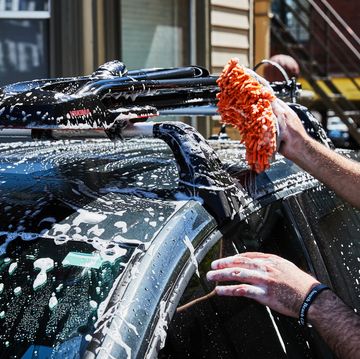
The Best Car Tools to Keep Up With Maintenance

How to Replace Your Car’s Brakes

How to Change Your Oil And Filter

The Best Carports for Weather Protection

The 40 Best Car Toys for Kids in 2024

The 6 Best Car Trash Cans for Collecting Debris

The 5 Best Cordless Power Washers

The 2024 Nissan Rogue Is Making Its Great Escape

Future Cars Worth Waiting For: 2024–2028

10 of the Greatest Corvettes of All Time

The 8 Best USB Car Chargers for a Full Battery

Cruise Control not Working (Diagnosis and Troubleshooting)
What makes cruise control not work.
Bad brake pedal/light switch — This means communication between you, cruise control and the car is interrupted, and you can’t have immediate manual control of the car.
Bad fuse — Fuses blow to protect the electrical system. Cruise control fuses will do the same, to protect the system and circuits in your car the fuse will break and then need repairing.
Failing speed sensor — Speed sensors are important in cruise control because your car needs to remain at the same speed consistently. Broken speed sensors will affect more than cruise control and need to be serviced urgently
Bad actuator vacuum, hose, or cable –The actuator vacuum is what connects and activates the throttle control. The fault may be with the hoses in the vacuum actuator or the cable linking the system together.
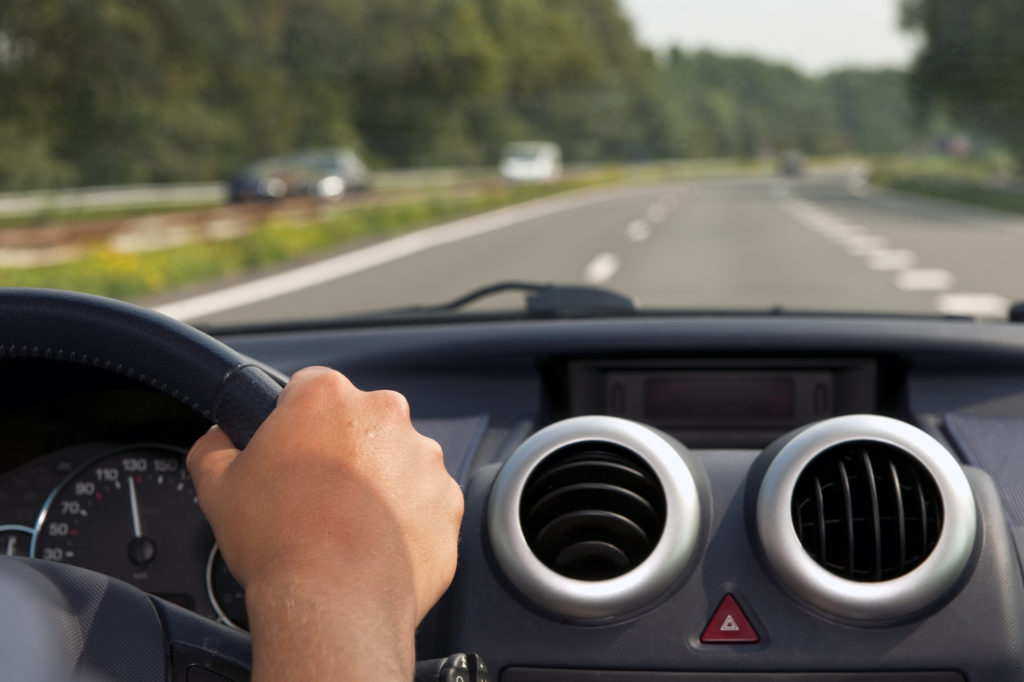
Symptoms of bad cruise control switch
- Symptom 1 — brake pedal does not disengage cruise control
There’s a switch fixed to the bases of the brake pedal and if cruise control does not deactivate when braking then it’s a sign that this switch is faulty.
- Symptom 2 — Hissing noises are heard from under the dash.
The cruise control switch is a vacuum system and for some vehicles, it is mounted near the brake pedals under the dash. If you can hear hissing, it could indicate that the switch or one of the switch’s vacuum hoses is broken.
- Symptom 3 — The cruise control switch/button itself does not work
When trying to turn on the function or while cruising it turns off, this is an indicator of a faulty switch and can be related to wiring issues or the above (1-2) symptoms
- Symptom 4 — A blown fuse
A blown fuse could be a simple error and fix. The switch circuit or fuse may just need to be replaced for the problem to resolve.
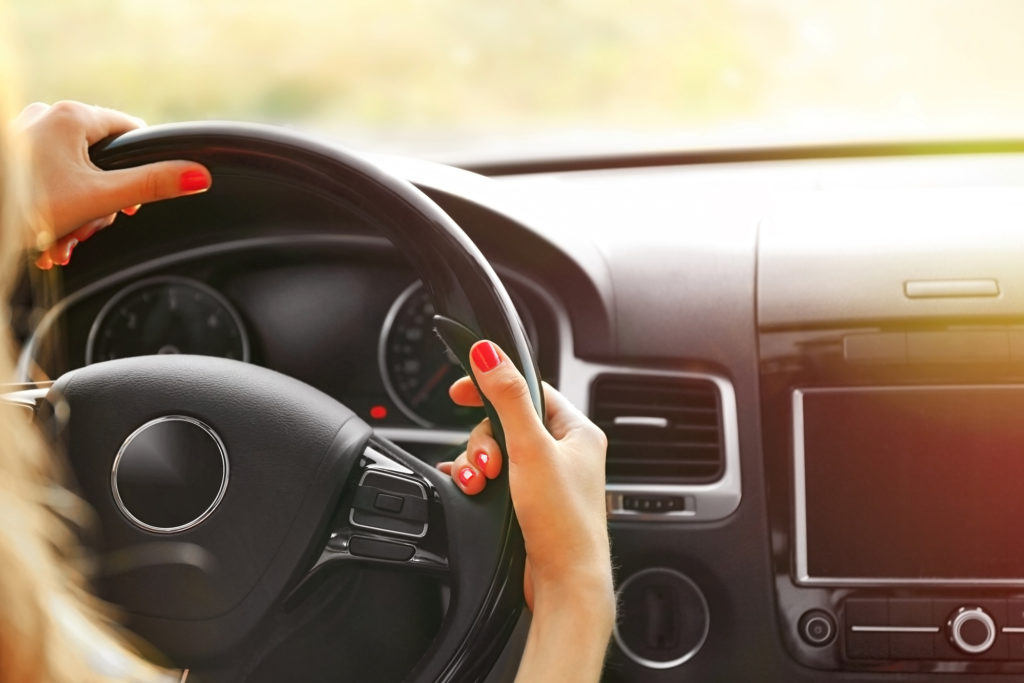
Possible Cruise control failure Scenarios
1. Cruise control not working after battery change
- Possible cause — This differs from vehicle to vehicle and among brands. Some drivers’ cruise control malfunctions after jump-starting their battery, and this is because the battery is still discharged. Newer cars have many electronic systems, and most are powered by the battery. So, if the battery is discharged or low-powered, the electrical cruise control system can be affected.
- Solution — Putting your battery on a trickle charger (2-5 amp) for 12 hours or driving on cruise for a couple of hours may resolve this issue.
2. Cruise control turns off while driving
- Possible cause — Damaged speed sensor or actuator, these two could be internally malfunctioning and causing the cruise control to disengage without input from you.
- Solution — Have a technician or mechanic run a diagnostic with the speed sensor and check the actuator hoses and cables.
3. Cruise control works intermittently
- Possible cause — this may relate to the brake pedal switch. If cruise control is intermittently disengaging, it could be a wiring issue with the switch.
- Solution — Have the brake pedal to cruise control switch investigated by a mechanic or technician and determine if there is a faulty wire to blame. You may need to have the switch or some of its parts replaced.
4. Cruise control turns on but will not set
- Possible cause — The brake pedal switch may be the issue. The brake pedal deactivates cruise control and if it is stuck in the open position, it may cause the cruise control to not engage or set properly.
- Solution — Ask your mechanic or technician to check for this issue specifically in their diagnostic and service.
5. Cruise control turns on by itself
- Possible cause — There may be a failure with the Electronic Control Module (ECM) which manages the actuators or Electronic Control Unit (ECU) which controls the speed in your cruise control
- Solution — You could attempt to reprogram the ECU and ECM if you have the computer tools, otherwise take it into a trusted mechanic or technician.
There are many helpful forums run by mechanics and amateurs: These are always great for solving those specific problems you might experience.
When CC does not set: https://mechanics.stackexchange.com/questions/34795/cruise-control-will-not-turn-on-cannot-be-enabled-nor-set
When CC is faulty after battery change: https://www.vwvortex.com/threads/help-cruise-control-not-working-after-dead-battery.4464553/
For cruise control and other general repairs, watch this channel: https://www.youtube.com/channel/UCf2f4MeZzSksVMe1z3Lp3hw
Can cruise control cause check engine light?
When the check engine light or MIL (Malfunction Indicator Light) is on, the cruise control light may blink to signal that cruise control has been disabled. This is a safety control as the vehicle is programmed to not go on ‘autopilot’ should the engine or mechanical issue relate to the cruise control systems. If the error or fault is with the cruise control systems, then the MIL may be lit for that as well.
How much does it cost to fix cruise control malfunctions?
- For switch repair (parts and labour) it’s estimated at $125- $350
- For fuse repairs, it could be up to $10 to buy the fuse and replace it yourself in a few minutes — there are many helpful YouTube tutorials on simple car repairs like this one.
- For actuator repairs, some cost more than $700
- Therefore, it’s important to know WHAT the issue is to get an idea of HOW MUCH it will cost you.
Does cruise control malfunction trigger the check engine light?
The function of a check engine light or MIL (Malfunction Indicator Light) is to communicate engine or mechanical failures in your vehicle to prevent an accident on the road. The MIL can be lit for simple reasons like the gas cap is loose. Should your CC system fail or run incorrectly, the MIL could light up. Often when there are other failures or engine faults, the MIL will light and the cruise control with a flicker to signal it has been disabled for safety reasons. Once the cruise control or other issues are fixed, all the lights should go back to being turned off.

Author: Dave Johnston
Related articles.
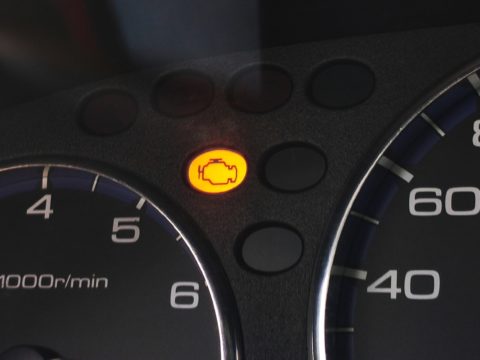
Leave a Reply Cancel reply
Your email address will not be published. Required fields are marked *
Save my name, email, and website in this browser for the next time I comment.
Recent Posts


MyCarMakesNoise.com
Copyright © 2024 My Car Makes Noise

CarParts.com will be back soon!
We apologize for the inconvenience. The CP Team is working on some upgrades to improve our service. Thank you for using CarParts.com!
You can call us at
1-866-529-0412
Reference ID: 18.7fc733e.1714271866.128ff2be

- Broken Down?
- Car Breakdown Cover
- Electric Car Breakdown Cover
- Van Breakdown Cover
- Motorcycle Breakdown Cover
- Classic Car Breakdown Cover
- Personal Breakdown Cover
- Short Term European Breakdown Cover
- Misfuel Cover
- Business Breakdown Cover
- Motoring Advice
- Vehicle Recovery
- Mobile Apps
- Corporate Social Responsibility
- Which? Recommended Provider
- 5 Star Defaqto Breakdown Cover
- Award Winning Breakdown Cover
- Frequently Asked Questions
- Travel Insurance
- Bicycle Insurance
- Home Insurance
- Motorbike Insurance
- Car Insurance
- Alloy Wheel Insurance
- GAP Insurance
- Pet Insurance
- Latest Stories
- Customer Lounge
- Business Lounge
- Looking for Business Cover?

- Breakdown Cover
- Car Servicing and Repairs
10 potential reasons why your cruise control is not working
What is cruise control.
Cruise control is a way of maintaining a selected constant speed without needing to use the accelerator pedal. It is closely integrated with the traction control and braking systems.
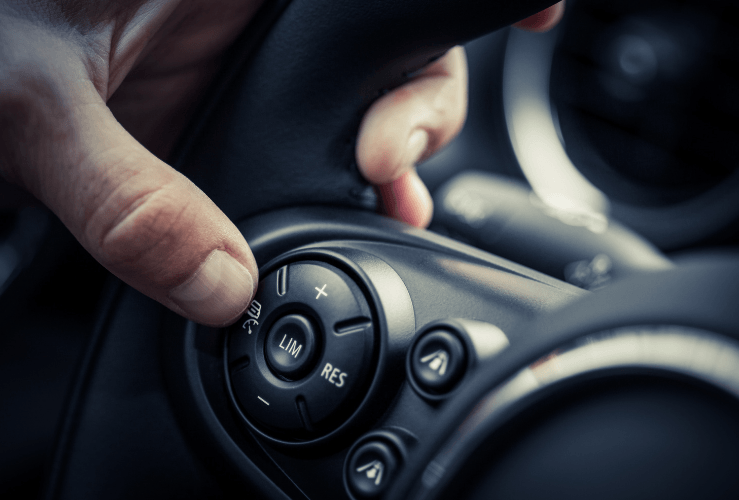
How do I know if my cruise control is not working?
Cruise control systems have become steadily more complex over time. This means it's not always easy to pinpoint why a cruise control system is not working - especially in newer models.
What happens if my cruise control stops working?
While cruise control can make long journeys easier and less stressful, if the system fails it can be dangerous. For example, it may not be possible to cancel a faulty cruise control system - which could have dire consequences. So if your cruise control only works sometimes, or not at all, avoid using it until you can find a solution - by taking it to a trusted mechanic. Alternatively, you may decide to research the issue and attempt to fix it yourself. However, the safest option is to take it to a garage.
Note: You should always check your vehicle handbook for any fault remedy before carrying out any work on your vehicle. If you are unsure of what is required to fix any problems, please consult a professional.
In this article we'll look at 10 of the most common reasons for a malfunctioning cruise control system.
How do cruise control systems work?
Before we begin, it's important to understand how cruise control systems work.
You must first activate the system by pressing the cruise control 'on' button - normally located by the steering wheel. However, this does not activate the system by itself.
Once you've set the cruising speed, the cruise control module (CCM) notes the present speed, then takes over the throttle body to maintain the speed of the car.
As the vehicle’s speed increases or decreases (due to inclines, for example), the CCM makes adjustments to the throttle body opening.
The desired cruising speed is maintained by modulating the engine speed. This speed can be adjusted, or cruise control can be cancelled by pressing 'cancel' or 'off'. The system is also cancelled if the driver applies the brakes.
Paying attention on the road
Cruise control systems are available with varying levels of complexity.
Aside from basic cruise control systems, ‘adaptive cruise control systems’ are often fitted with radar for maintaining safe distances between vehicles behind and ahead. Some even control engine speed in response to nearby vehicles.
Whichever cruise control system your car has, it's critical you still pay attention to other road users in order to avoid collisions. Cruise control should not be considered a fully ‘autonomous’ driving system.
Electronic throttle control systems (ETCS)
With electronic throttle control systems, cruise control is integrated with the engine control module (ECM). These are also known as 'drive-by-wire' systems because of their semi-autonomous nature.
Note that ETCS system failures may require the attention of a trained mechanic.
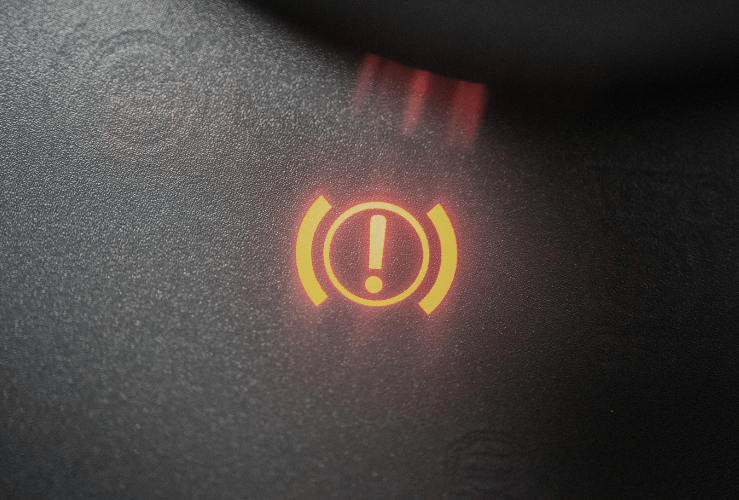
What are the top reasons for cruise control failure?
Brake light switch fault.
Cruise control systems will not activate if they cannot detect a working brake light switch. This is because cruise control systems automatically cancelled once the brakes are applied.
How do you repair a break light switch fault?
If you have some understanding of car mechanics, you may be able to examine the brake light switch, which is located below the steering wheel. However, because such systems have multiple wires, it can be difficult to identify any fault.
You may decide to invest in a multi-application service tool/OBD scanner, which can plug directly into your engine’s computer and pinpoint any fault with your brake light switch.
However, rather than spend money on an OBD scanner and learn how to use it, many people simply replace the brake light switch. Many aftermarket brake light switch replacements are available.
Cruise control switch function: worn out
It's possible for a cruise control switch to wear out over time by being pressed too much or too hard. It may also get damaged by drink spillages or by solvent used when cleaning the steering wheel.
This could mean the CCM cannot be communicated with, potentially disabling cruise control entirely.
How do you check if the cruise control switch function has worn out?
You may be able to confirm this is the issue with an OBD scanner. However, you can check this by looking to see if the cruise control light appears on the dashboard when the switch is operated.
Brake light issues
Some cruise control systems will not activate if they detect a blown brake light. Some aftermarket LED lights draw less current than factory-new lights, which can make the cruise control think a light has been blown.
Spiral cable fault
The spiral cable connects electrical circuits in the steering column to elements in the steering wheel - such as the cruise control activation button. If the spiral cable has an open circuit, the switch may be unable to communicate with the CCM.
Check engine light
Engine or transmission problems may automatically lead to the disabling of cruise control - especially if it's of the ETCS type.
Fuses and relays
The cruise control actuator circuit may be protected by fuses or relays. If these are blown or damaged, the cruise control system may not activate.
Vacuum leak
On some older cars vacuum actuators are used to manage the throttle body when cruise control is activated. A cracked tub or shoe could result in a leak, preventing the system from working. It might also make the engine idle higher.
Vehicle speed sensor fault
The modern car often has multiple speed sensors. If the ECM speed sensor signal used by the CCM is lost, cruise control will not work.
ABS sensor faults
If any of the ABS sensors are faulty (there is normally one on each wheel), the cruise control system will not activate.
Electrical problems
Electrical components are integral to cruise control systems, and should therefore be thoroughly checked in the event of a fault. Issues with source voltage, connectors and wiring harness could disable the system.
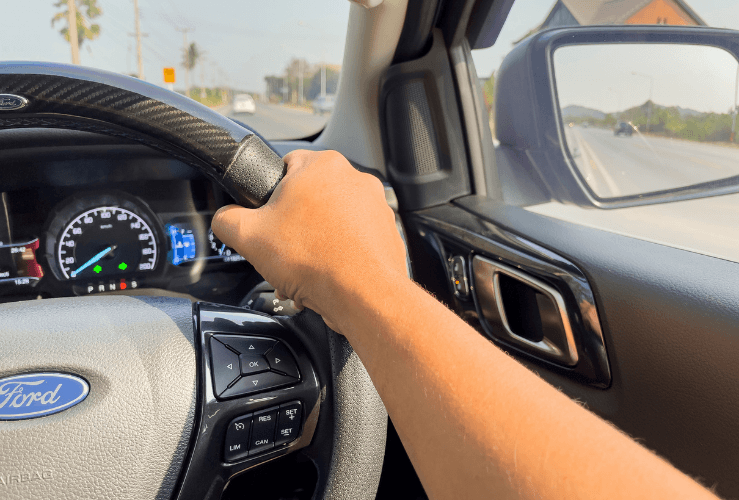
Credit: xzotica65 - stock.adobe.com
Ford cruise control not working?
If the cruise control system on your Ford is not working, the most likely culprits are still those listed above. However, experienced Ford mechanic “ Build It Make It ” on YouTube argues that burned out brake lights are the most common reasons for cruise control failure - especially on models such as the Ford F150.
The next most common reason for faulty Ford cruise control is a blown fuse . Fuses can be checked with a multimeter if you have the required experience, and then replaced.
Build It Make It then lists a broken brake light switch as being the next most common reason. A faulty shifter actuator is listed as the next most common fault cause. This is a lock to ensure you’re not gear shifting when you don’t have the brake engaged. Since the car cannot detect which gear you’re in, it will deactivate the cruise control as a safety measure.
And the fifth most common reason for Ford cruise control not working is faulty control switches . Unless you have extensive automotive mechanical experience, it may be best to have your control switches replaced by a trained Ford mechanic.
More possible Ford cruise control fault reasons
Auto Repair Guys on YouTube list the following as common reasons for Ford cruise control not working:
- Faulty cruise control fuse (often located under glove box) Note: newer Fords may not have fuses for cruise control
- Faulty control switches
- Faulty brake light switch (sometimes integrated with the cruise control switch)
- Faulty ‘cork spring’ or ‘spiral cable’ - as mentioned this connects the steering wheel controls to the car’s computer.
- Motoring Developments and The Future
- Fuel Types and the Environment
- Safety and Security
- Weather and Seasons
- Breakdown Advice
- Driving In Europe
- Tips on Choosing Breakdown Cover
- Motoring Costs
- In-Car Games
- Motorcycling Advice
- What are the signs your clutch needs replacing?
- What is An Air-Con Bomb and How Do You Use One?
- When and How to Check Your Car Brakes
- Car servicing: Is using a dealership worth it?
- What is ABS? The Anti-lock Braking System Explained
- Car rust: How to repair and prevent it – Complete guide
- Catalytic Converters: What Does a Catalytic Converter Do?
- How much does it cost to replace brake pads?
- Car coolant leaks: What are the signs?
- What is an ECU?
- Regassing your car's air-con: Complete guide
- Top reasons your engine management light is on
- Drink Drive Limits: All You Need to Know
- When should you replace your car shock absorbers?
- Car leaking fuel: Common causes and fixes
- Broken coil spring symptoms: Can I still drive my car?
- How to prevent voiding your car’s warranty
- Car oil leaks: Why they happen and how to fix them
- How far can you drive an overheating car?
- Where do you put antifreeze in your car?
- Low car oil symptoms not to ignore
- Car air conditioning: tips and tricks for super-cool AC
- What do I do if my car is juddering?
- How to Reset your Engine Management Light / Check Engine Light
- Car engine oil check: How to do It and when
- How to repair the roof of a convertible car
- Can you tint front windows? How to do window tinting legally
- Tyre bulges: The dangers they pose - and how to fix them
- 10 signs your gearbox is failing
- How to choose a towbar?
- How to repair a paint scratch yourself
- How to change car bulbs: Headlights, indicators and brake lights
- Should I repair or sell my old car?
- I've put the wrong fuel in my car: what should I do?
- How to use a car tyre puncture repair kit
- How to Fit a Tow Bar
- Car tyre size explained
- How to change a car battery
- Car parts: Buy from an authorised dealer or independent garage?
- Is it worth converting a classic car to an EV?
- Common car body shapes: a crash course
- How to check your tyre pressure
- How much oil does my car take?
- Diesel Particulate Filter (DPF) maintenance
- How much is an mot? MOT costs in UK
- Car won't start? Here are common causes and solutions
- Spring cleaning your car
- Head Gasket Guide | Head Gasket Repair UK
- What type of oil does my car need?
- What does brake fluid do and how you can change it yourself
- The signs and dangers of a faulty exhaust
- Blown Turbo Symptoms
- Water is leaking from under my car: What should I do?
- 10 tips for avoiding costly MOT repairs
- Why is my car stalling?
- Timing belt: What does it do? When does it need changing?
- 9 common reasons for failing an MOT
- MOT guide: Common questions answered
- Does breakdown cover include punctures?
- What do Cat C and Cat D mean?
- Keeping your suspension in good shape
- Why does my car smell of petrol?
- How often should you service your car?
- 5 car repairs you shouldn't tackle yourself
- Flooded petrol engine: How to fix it
- How to Fix Your Leaking Sunroof
- My car is stalling: How do I fix it?
- Air conditioning fault: How to fix it yourself
- DIY puncture repairs: a complete guide
- Cloth or leather car seats: Which are right for you?
- How to transfer a private number plate to your car
- How to take care of your clutch
- Car radiator leak – what do you do?
- Paint protection film (PPF) for your car: is it worth it?
- How to install new car front seats: quick guide
- What is a wheel bearing and why is it important?
- Dashboard warning lights: a quick guide
- Why does my car judder when I brake?
- What are run-flat tyres?
- What size engine do I need?
- Damaged windscreen? Here’s why you should fix it promptly
- How much is an MOT test?
- Choosing the right engine oil: A quick guide
- When should you replace your fuel filter?
- Car battery maintenance: How to keep your battery in good condition
- Antifreeze - what it does and which you should use
- What is wheel alignment?
- How to remove the smell of cigarette smoke from your car
- MOT: is your vehicle exempt?
- When to change your car battery
- Does your car need a spring clean?
- How to look after your engine
- How to increase the life of your car
- Potholes: How to avoid damaging your car
- Everything you need to know before buying and changing oil
- The benefits of car servicing
- What causes battery problems in winter?
- Ways to clean your car headlights
- When to change your timing belt
- Keeping a tool box in the car: What to carry
Get a Quote

I unexpectedly found myself with a flat battery as I was about to set off on a long journey. I called Start Rescue and someone was with me within th...
Quick efficient , friendly service. Great price.
Excellent service. Prompt. Efficient. Fantastic customer service. Kept me updated every step of the way.
Had a problem recently where my car suddenly 'died' and wouldn't start again - fortunately not in a dangerous position. Start Rescue arrived quickly, ...
I've stayed with 'start' for about three years now because I like that customers renewing pay the same as new customers. I also like the wide range of...
Exhaust back box came off my 20 year old Mini cooper about 13 miles from home. Filled in the information on the app & were kept updated brilliantly as...
My daughter broke down recently and used the start rescue app - 7 minutes later (yes seven) a tow truck with a very helpful man arrived and helped her...
I have had to use them twice over the last 5 years unfortunately, but I have found the company from start to finish very professional. Both time I w...
£48 for cover for my car. I had a fault Mon morning peak time in Edinburgh 100 miles from home. Used the app, technician arrived after about 45 mins a...
Our Fiat 500L had not been driven for three months for medical reasons. Even when I succeeded in starting it up, the battery light stayed on. I called...
We use essential cookies to ensure our site is safe and works properly. We also use analytics cookies to offer you a more personalised experience and to improve our site. To find out more and manage your cookie preferences, please choose ‘Manage’ or view our cookies policy.

[SOLVED] Fixing U121E: Steering Wheel Cruise Control Switch Communication Lost
If you’re experiencing an illuminated Engine Light or Service Engine Soon Warning Light, it could be due to the automobile fault code: u121e.
This code is typically caused by a faulty Steering Wheel Cruise Control Switch, an open or shorted harness, or a poor electrical connection in the Steering Wheel Cruise Control Switch circuit.
It could also be caused by a faulty Steering Column Control Module (SCCM).
The importance of repairing this issue lies in the fact that it could affect the functionality of your vehicle’s cruise control system.
The repair difficulty is moderate, with a repair time of 1.0.
To fix the issue, you should visually inspect the related wiring harness and connectors, check for damaged components, and look for broken, bent, pushed out, or corroded connector’s pins.
Decoding U121E: Common Symptoms You Need To Know
If you notice the Engine Light ON, it could be a sign of u121e fault code.
Here are some symptoms to look out for:
- The U121E fault code in an automobile can cause several symptoms.
- The most common symptom is the illumination of the engine light or service engine soon warning light.
- Other symptoms include issues with the transmission, such as difficulty shifting gears or slipping gears.
- The vehicle may also experience a loss of power or acceleration, and the speedometer may not function properly.
- Additionally, the vehicle may experience stalling or hesitation during acceleration, and the fuel efficiency may decrease.
- It is important to address these symptoms promptly to prevent further damage to the vehicle.
Decoding U121E: Common Causes Of The Fault Code
The automobile fault code u121e can be caused by a faulty cruise control switch, poor electrical connection, or a faulty control module.
- The automobile fault code U121E can be caused by a faulty steering wheel cruise control switch.
- It can also be caused by an open or shorted steering wheel cruise control switch harness.
- Another possible cause is a poor electrical connection in the steering wheel cruise control switch circuit.
- Lastly, a faulty steering column control module (SCCM) can also trigger this fault code.
Fix U121E Code: Simple Steps To Get Your Car Running
Below are some possible fixes for the automobile fault code u121e, including inspecting wiring harness and connectors for damage or corrosion.
- To fix the automobile fault code u121e, first, check the possible causes listed above.
- Then, visually inspect the related wiring harness and connectors.
- Look for damaged components and check for broken, bent, pushed out, or corroded connector’s pins.
- This fix will take an estimated repair time of 1.0 hour.
Crunching The Numbers: U121E Fixing Cost And Complexity
The automobile fault code U121E can be diagnosed and fixed within an estimated repair time of 1.0 hour. The cost of repair is influenced by the repair time, which is commonly charged between $75 and $150 per hour by most auto repair shops. Therefore, the total cost of fixing the U121E fault code will depend on the hourly rate charged by the repair shop and the estimated repair time required to fix the issue.
U121E: Lost Communication With Steering Angle Sensor
The SCCM is located near the top of the Steering Column underneath the Steering Wheel.
The SCCM includes the Clockspring, the Multi-Function Switch and a Local Interconnect Network (LIN)Controller Area Network (CAN) C Gateway. The Right Steering Wheel Switch (Speed Control Switch) communicates with the SCCM through a dedicated LIN Bus. The DTC sets if the SCCM does not detect any communication with the Right Steering Wheel Switch (Speed Control) for greater than five seconds.
U121E Code – Lost Communication With Steering Wheel Cruise Control Switch.
If you’re experiencing the u121e fault code, your engine light may be on. This could be due to a faulty steering wheel cruise control switch, an open or shorted harness, a poor electrical connection in the steering wheel cruise control switch circuit, or a faulty steering column control module. To fix the issue, check the possible causes listed above and visually inspect the wiring harness and connectors. Look for damaged components and check for broken, bent, pushed out, or corroded connector pins.
If you’re experiencing an Engine Light ON or Service Engine Soon Warning Light due to the u121e fault code, there are a few possible causes to consider. One of them is a faulty Steering Wheel Cruise Control Switch or a related wiring issue. To fix this, you should visually inspect the wiring harness and connectors for any damage or poor electrical connections. Check for broken, bent, pushed out, or corroded connector pins. This will help you identify and resolve the issue.
Yes, a faulty Steering Column Control Module (SCCM) can cause the u121e fault code. This can result in the engine light turning on or the service engine soon warning light. Other possible causes include a faulty steering wheel cruise control switch, an open or shorted harness, or poor electrical connection in the steering wheel cruise control switch circuit. To fix the issue, it is recommended to visually inspect the related wiring harness and connectors, check for damaged components, and look for broken, bent, pushed out, or corroded connector’s pins.
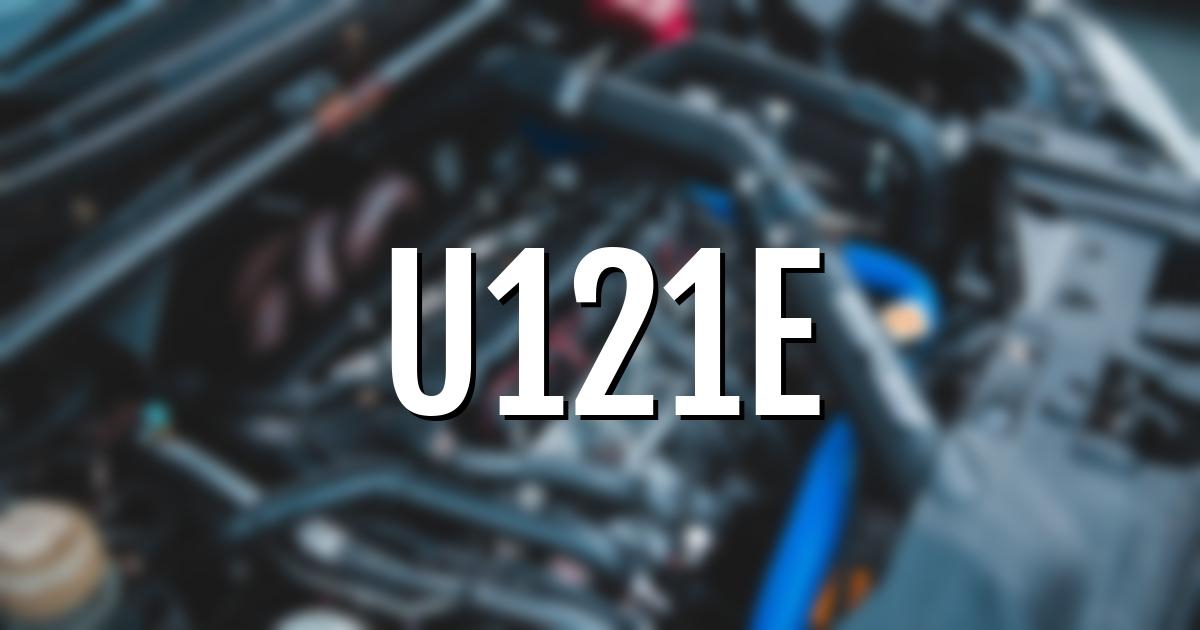
If your engine light is on and you have a u121e fault code, it may be due to a faulty steering wheel cruise control switch, an open or shorted harness, poor electrical connection, or a faulty steering column control module.
To fix it, visually inspect the wiring harness and connectors for damage and check for broken, bent, pushed out, or corroded connector pins.

Symptoms of a Failing Cruise Control System
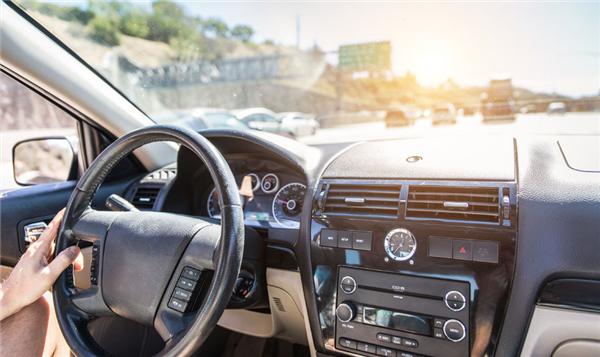
For many drivers, cruise control is a non-negotiable vehicle convenience. Not only does it give drivers a break from having to engage the throttle, but it also improves gas mileage. Among the electrical components of your vehicle, cruise control is one of the most reliable, but occasionally, it, too, can fail. If you have a long commute, Mobile Installation knows how important your cruise control can be. The next time you’re cruising down the highway, keep an eye out for these symptoms. If you notice anything unusual, take your vehicle to your local technician for an inspection.
Not Maintaining Consistent Speed
When you’ve set the cruise control, it should always maintain the speed you’ve set. If you notice that your speed fluctuates after setting it, your system may be malfunctioning. To determine if you have a problem, try resetting the system. To do this, turn the cruise control off by disengaging the switch in your car.
Next, turn the system on again, set a speed, and reapply cruise control. Sometimes resetting the system is all it takes to restore functionality, but if you continue to experience increasing or decreasing speed, you have a problem. Take your vehicle to your local mechanic to have it checked out.
The System Does Not Engage
If your cruise control won’t engage or disengage when you attempt to turn the system on or off, your vehicle has a problem. Keep in mind that the system is only made to engage at speeds above 25 mph. If you’re traveling below the minimum speed and this occurs, you have nothing to worry about. A system that doesn’t engage or disengage may be due to any of the following factors:
● A faulty vehicle speed sensor
● Throttle malfunction
● Vacuum bleed switch malfunction
● Blown fuse
● Defective transmission signaling
● Faulty speed control assembly
Each vehicle manufacturer has a slightly different procedure for turning on cruise control. Make sure you’ve read and followed the instructions before assuming your system is faulty. If it continues to malfunction, have your vehicle inspected by a certified technician.
Dashboard Cruise Control Light Issues
If your cruise control light remains on even after you turn the system off, you may have a problem with your speed control assembly. This issue is usually due to a malfunctioning fuse or a communication disruption in your vehicle’s computer. If the latter occurs, you’ll need to replace your vehicle’s speed control assembly. You may also find that the cruise control light does not illuminate when you attempt to activate the system. A faulty light could indicate a problem with the cruise control switch, or an issue elsewhere in the system.
Cruise Control Installation in Brooklyn Park
If your cruise control is malfunctioning and you’re ready to install a new one, Mobile Installation is here to serve you. We specialize in interior and exterior aftermarket installs and are dedicated to first-rate, personalized service. Our certified technicians are experts in the automotive field and have decades of experience in the industry. To learn more about our services or to schedule an install, contact us today. You can reach us at 612-986-3332, or you can message us on our contact page .
Contact Us for More Information
Possibly related posts:.
- Does Your Motorcycle Need Cruise Control?
- Can I Add Cruise Control to My Ride?
- How to Know if Your Cruise Control Needs Repairs
- What is Adaptive Cruise Control?
- What Features You Should Look for in Cruise Control
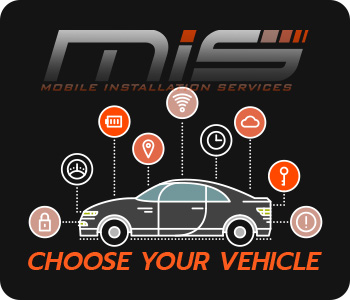
- Uncategorized (13)
- Marine Audio (7)
- Car Audio (63)
- Car Security (54)
- Professional Installation (165)
- Car Audio Brooklyn Park (16)
- Car Amplifiers (26)
- Car Subwoofers (28)
- Backup Camera (23)
- Minneapolis (11)
- Time Delay (1)
- Bug Shield (10)
- Custom (51)
- Wheels (15)
- Remote Starters (34)
- Remote Starts (31)
- Heated Seats (20)
- Floor Mats (6)
- Window Tint (20)
- Running Boards (12)
- Collision Avoidance (5)
- Tow Hitch (5)
- Cruise Control (17)
- Tonneau Covers (18)
- Vehicle Maintenance (19)
- Lane Departure Systems (3)
- Dash Cam (9)
- Side Step Bars (10)
- Inverter (9)
- DC to AC (11)
- Laptop Mount (11)
- Radar Detector (1)
- Car Alarm (9)
- Power Windows (1)
- DVD System (2)
- Hands-Free Communication (4)
- Car Upholstery (5)
- Power Liftgate (1)
- Lift Kits (1)
- Catalytic Converter (4)
- Electric Vehicle (1)
- December 2022 (5)
- November 2022 (1)
- October 2022 (3)
- September 2022 (3)
- August 2022 (3)
- July 2022 (1)
- June 2022 (5)
- April 2022 (6)
- March 2022 (2)
- February 2022 (3)
- January 2022 (2)
- December 2021 (3)
- November 2021 (3)
- October 2021 (3)
- September 2021 (1)
- August 2021 (3)
- July 2021 (2)
- June 2021 (2)
- May 2021 (2)
- April 2021 (2)
- March 2021 (1)
- February 2021 (2)
- January 2021 (3)
- December 2020 (1)
- November 2020 (2)
- October 2020 (1)
- August 2020 (2)
- July 2020 (2)
- June 2020 (3)
- May 2020 (3)
- April 2020 (2)
- March 2020 (3)
- February 2020 (3)
- January 2020 (3)
- December 2019 (3)
- November 2019 (3)
- October 2019 (2)
- September 2019 (3)
- August 2019 (3)
- July 2019 (3)
- June 2019 (2)
- May 2019 (3)
- April 2019 (3)
- March 2019 (1)
- February 2019 (1)
- January 2019 (1)
- November 2018 (2)
- October 2018 (4)
- September 2018 (3)
- August 2018 (3)
- July 2018 (3)
- June 2018 (3)
- May 2018 (3)
- April 2018 (3)
- March 2018 (3)
- February 2018 (2)
- January 2018 (2)
- December 2017 (2)
- November 2017 (1)
- October 2017 (3)
- September 2017 (3)
- August 2017 (3)
- July 2017 (3)
- June 2017 (3)
- May 2017 (3)
- April 2017 (3)
- March 2017 (2)
- February 2017 (3)
- January 2017 (3)
- December 2016 (3)
- November 2016 (3)
- October 2016 (2)
- September 2016 (3)
- August 2016 (3)
- July 2016 (3)
- June 2016 (3)
- May 2016 (3)
- April 2016 (3)
- March 2016 (3)
- February 2016 (3)
- January 2016 (3)
- December 2015 (4)
- October 2015 (3)
- September 2015 (1)
- August 2015 (1)
- July 2015 (1)
- June 2015 (1)
- May 2015 (2)
- April 2015 (1)
- March 2015 (1)
- February 2015 (1)
- January 2015 (1)
- December 2014 (1)
- September 2014 (3)
- August 2014 (2)
- July 2014 (1)
- June 2014 (3)
- May 2014 (2)
- April 2014 (2)

IMAGES
VIDEO
COMMENTS
Cruise control light doesn't illuminate. One of most common symptoms of a problem with the cruise control switch is a cruise control light that will not illuminate. The light should be illuminated as soon as the cruise control system is switched on to notify the driver that the system is activated. If the light does not come on, that may be ...
Use a vacuum pump to apply vacuum to the dump hose to approximately 15 inches, and then press on the brake pedal. The vacuum should be dumped and the gauge should read 0. If the vacuum is not ...
Reason #9. Bad Cruise Control Switch. Your vehicle's cruise control switches have internal contacts that wear out. If that happens, the switches won't be able to contact the CCM. Depending on which buttons are faulty, your whole cruise control can stop working or just some functions won't work. Reason #10.
Cruise control not working in your vehicle? Today we're going over three main components of the cruise control system - The Cruise Control Main Switch, Cruse...
Spiral Cable - Many vehicles mount the cruise control switch on the steering wheel. A faulty spiral cable may have an open circuit, preventing the switch from contacting the CCM. Control Switch - If the internal contacts wear out, the cruise control switch may not be able to contact the CCM. This might disable cruise control completely, or ...
Fixing Faulty Cruise Control. Alarmingly, the speedometer needle steadily winds down from 75 mph toward 50. Just as you uncurl your feet and try to accelerate back to traffic speeds, the vehicle ...
3. Cruise control works intermittently. Possible cause — this may relate to the brake pedal switch. If cruise control is intermittently disengaging, it could be a wiring issue with the switch. Solution — Have the brake pedal to cruise control switch investigated by a mechanic or technician and determine if there is a faulty wire to blame ...
The control module monitors the vehicle speed sensor (VSS) signal when setting and maintaining the cruise control speed. If the driver applies the brakes (or the clutch pedal if the vehicle has a manual transmission), the brake switch (or clutch switch) sends a signal to the control module, causing the module to disengage the cruise control.
The brake switch plays a crucial role in the operation of the cruise control system. It is responsible for detecting when the brakes are applied and signaling the cruise control system to disengage. If the brake switch is faulty, it can prevent the cruise control from canceling or engaging. To test the brake switch, follow these steps:
The fault code P0564 can be caused by a faulty cruise control switch, an open or shorted cruise control switch harness, a poor electrical connection in the cruise control switch circuit, or a faulty body control module (BCM). Fixing Code P0564: Simple Steps To Resolve The Issue!
Faulty brake light switch (sometimes integrated with the cruise control switch) Faulty 'cork spring' or 'spiral cable' - as mentioned this connects the steering wheel controls to the car's computer. There are many reasons why your car's cruise control system is not working, including brake light switch faults; worn out control ...
The automobile fault code U121E can be caused by a faulty steering wheel cruise control switch. It can also be caused by an open or shorted steering wheel cruise control switch harness. Another possible cause is a poor electrical connection in the steering wheel cruise control switch circuit. Lastly, a faulty steering column control module ...
How to repair, install, fix, change or replace a broken, damaged, faded, worn or faulty cruise control switch on 07, 08, 09, 10, 11, 12, 13, 14 Chevy Suburban 1500
A system that doesn't engage or disengage may be due to any of the following factors: A faulty vehicle speed sensor. Throttle malfunction. Vacuum bleed switch malfunction. Blown fuse. Defective transmission signaling. Faulty speed control assembly. Each vehicle manufacturer has a slightly different procedure for turning on cruise control.
Cruise Control test
Check that there is +12 power to the key switch on the operator's panel. If there is not, check the fuse on the red wire at the pump relay. Check that there is power to the pump relay (Terminal 3) from the battery. Check that there is power to the rocker switch on Terminals 11 and 24 when the key switch is in the "ON" position. If there is ...
5100 wire from Terminal 13 of the room control switch. Check Ter-minal 13 on the room control switch, while pushing the switch toward the "EXTEND" position. If there is power, replace the switch. If there is no power on Terminal 13, The (BLACK) 5100 wire in the room ex-tension manifold harness is shorted to a +!2 supply. 6810 (RED)
PADDLE SWITCH CONTROL HWH CORPORATION 2096 MOSCOW ROAD MOSCOW, IOWA 52760 (800) 321-3494 / (563) 724-3396 INTERNET: http: //www.hwhcorp.com ... Faulty grounds, es-pecially for the control panel, solenoid manifold or the pump assembly, may cause control panel component damage and/or